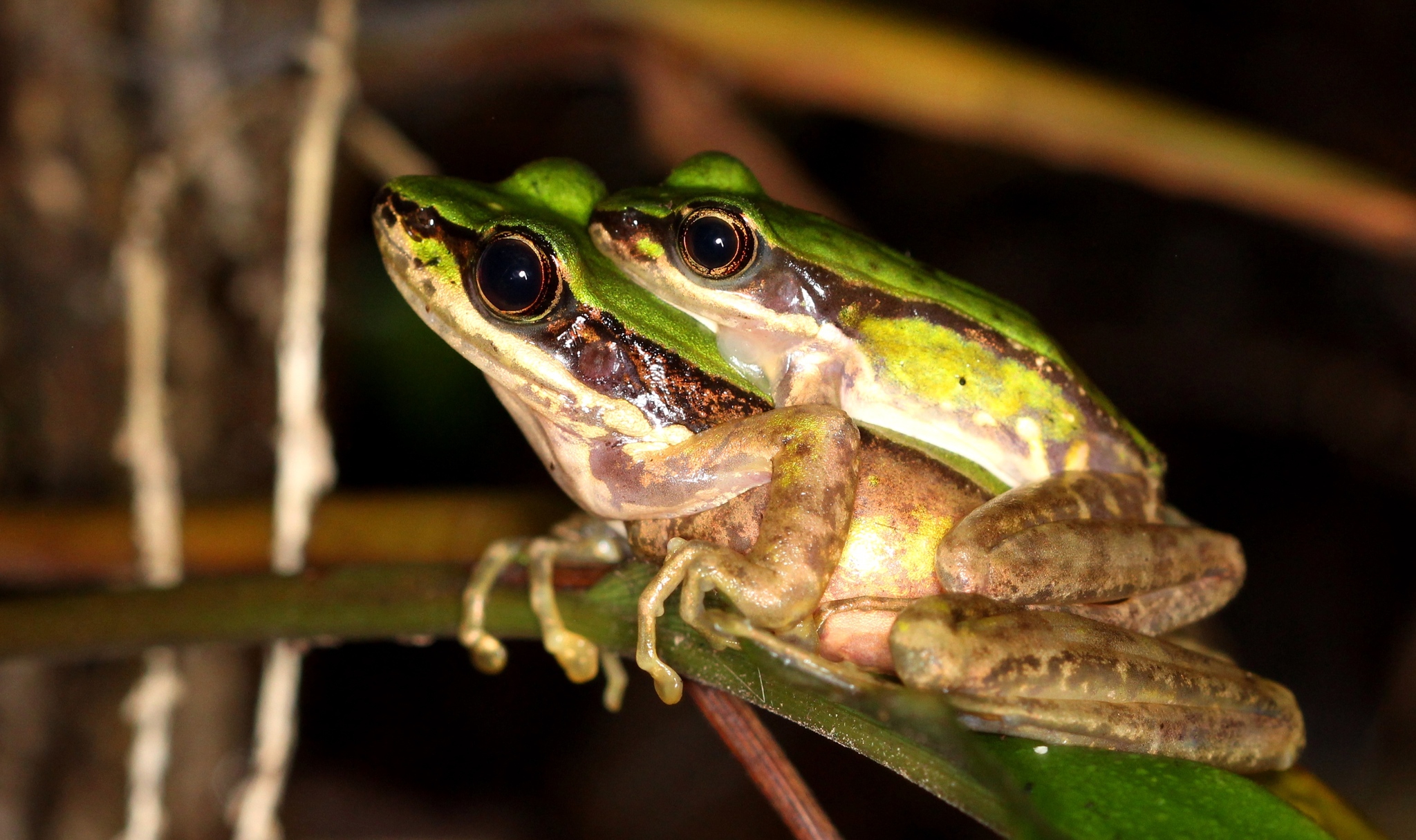| Citation |
|
Description |
Geographic Range [top]
Range Description: This species is currently known only from 640 m Asl in Van Ban District, Lao Cai Province, northern Viet Nam (Bain et al. 2006). This is unlikely to represent the actual limits of the species range as similar habitat and elevations to those in its known locality extend into high-elevation parts of adjacent Yen Bai Province and further surveys may uncover its presence there. Therefore its range has been projected beyond known sites to include areas of suitable habitat. The species estimated extent of occurrence (EOO) is 2,321 km2, which represents a single threat-defined location.
Countries occurrence:
Native:
Viet Nam
Additional data:
? Number of Locations: 1
? Lower elevation limit (metres): 640
? Upper elevation limit (metres): 640
Range Map: Click here to open the map viewer and explore range.
Population [top]
Population: Nothing is known about the size or trends of this species population except that it has been detected in only two surveys (Bain et al. 2006, Jodi Rowley unpubl. data). Population declines are expected for this species due to the effects of historic burning, and agriculture (Nguyen and Harder 1996, Sodhi et al. 2009).
Current Population Trend: Decreasing
Additional data:
Habitat and Ecology [top]
Habitat and Ecology: This species is closely associated with swiftly-flowing streams and rivers in evergreen forest and has been observed on river banks, rocks in the stream torrent, and on branches up to one meter above the ground (Bain et al. 2006). Forest at the species only known locality is composed of mixed hardwoods, bamboo and banana, and is characterized by a dense canopy (Bain et al. 2006). Reproductive behaviour including males calling from leaves on small branches and pairs in amplexus has been observed during September (Bain et al. 2006). Much of the species reproductive biology is unknown, however it presumably breeds in streams by larval development, as with other Amolops for which the reproductive strategy is known.
Systems: Terrestrial; Freshwater
Continuing decline in area, extent and/or quality of habitat: Yes
Movement patterns: Not a Migrant
Use and Trade [top]
Use and Trade: There are no reports of this species being utilized.
Threats [top]
Major Threat(s):
Habitat loss due to expanding agriculture has been identified as a major threat to biodiversity throughout Southeast Asia and is ongoing in Viet Nam (Sodhi et al. 2009). Habitat in parts of its range in Van Ban District (the species type locality) is severely threatened by the selective logging of large, valuable timber species, unsustainable harvest of non-timber forest products (e.g. bamboo, fungi, medicinal plants, and rattan), the clearance of large tracts of riparian forest (often by fire) for the cultivation of cardamom, and degradation by continued grazing of domesticated buffalo (Swan and O’Reilly 2004, Sodhi et al. 2009). The area surrounding the species type locality was being surveyed for a large hydropower station when the first individuals were collected (Raoul Bain pers. obs.). Three factories have since been built in the area, with another three planned for completion (Truong Nguyen pers. comm. February 2017). This species has been observed in disturbed pasture and rice paddies, but is very likely threatened by habitat loss (Jodi Rowley unpubl. data).
Conservation Actions [top]
Conservation Actions: Conservation Actions
There are currently no conservation actions in place for this species, however a small section of Hoang Lien Son Nature Reserve in included in part of its range and it is possible that the species occurs there.
Conservation Needed
The species is very poorly known, but its conservatively mapped range partially overlaps a protected area. In order to ensure this species long-term survival, the first priority is to address the lack of data to determine the accuracy of the projected range and the proportion that receives protection. Once this information is available, it will be possible to make more specific recommendations regarding necessary protection.
Research Needed
Research should be carried out to determine its distribution, but also its relative abundance, life history and threats.
Citation: IUCN SSC Amphibian Specialist Group. 2017. Amolops cucae. The IUCN Red List of Threatened Species 2017: e.T136018A87952169. http://dx.doi.org/10.2305/IUCN.UK.2017-2.RLTS.T136018A87952169.en. Downloaded on 19 October 2018.
Disclaimer: To make use of this information, please check the .
Feedback: If you see any errors or have any questions or suggestions on what is shown on this page, please provide us with feedback so that we can correct or extend the information provided
|

